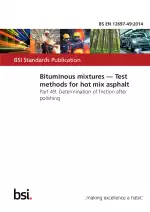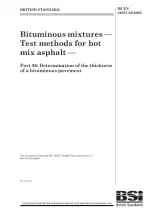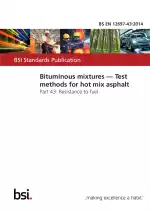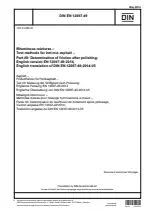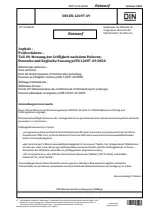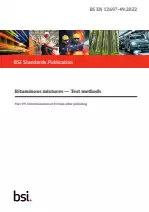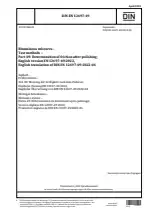BS EN 12697-49:2014 PDF Download
Standard EN SampleBituminous Mixtures: Test Methods for Hot Mix Asphalt - Determination of Friction After Polishing
Also Known As:
BS EN 12697-49:2014 is a standard that specifies a test method for determining the friction of bituminous mixtures after polishing. The test is conducted on samples of bituminous mixtures, which can be either laboratory-produced or cores taken from the site. This method is commonly referred to as the Wehner and Schulze method.
The purpose of this test is to evaluate the skid resistance of bituminous surfaces, especially after they have undergone polishing due to traffic. In the test, the sample is subjected to a fixed number of passes and then the friction at a speed of 60 km/h is measured. The results provide information on the effectiveness of the bituminous mixture in providing adequate skid resistance under real-world conditions.
The standard provides detailed instructions on the apparatus and equipment required for the test, as well as the sampling procedure. It also specifies the test conditions, such as the temperature at which the test is to be conducted. Compliance with this standard ensures that the test for determining friction after polishing is carried out consistently and accurately. This information is crucial for the design and maintenance of road surfaces to ensure road safety.
| Descriptors | Tensile testing, Bend testing, Construction materials, Roads, Bitumens, Bituminous products, Asphalts, Splitting tests, Fracture toughness, Plane strain fracture toughness tests |
| ICS Codes | 93.080.20 - Road construction materials |
| Language(s) | English |
| ISBN | 978 0 580 76464 6 |
| File Size | 1.3 MB |

